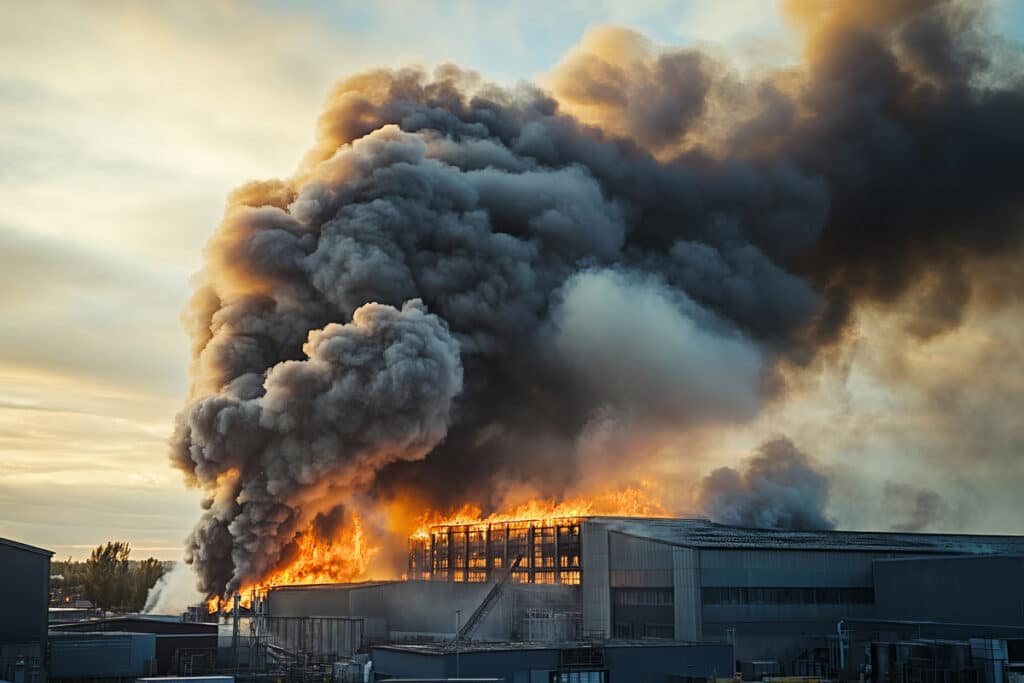Beyond the Blast: Environmental and Health Concerns for Louisville Residents After the Plane Explosion
Last updated Friday, November 7th, 2025

The tragic explosion and crash of the UPS MD-11 cargo plane in Louisville, Kentucky, headed to Honolulu, Hawaii on November 4, 2025, instantly created a visible scene of devastation. While the immediate loss of 12 people, two people in intensive care, many injured, and property damage were staggering, a hidden crisis began unfolding in the aftermath. The serious environmental contamination and potential long-term health problems for the residents in the surrounding neighborhoods where the plane exploded.
The legal team at Isaacs & Isaacs is dedicated to ensuring that families affected by this tragedy are not left to face the consequences of this invisible pollution alone. We believe the responsible parties must be held accountable for the extensive contamination that has compromised the safety of the community’s homes and health.
The Toxic Aftermath of a Plane Crash and Explosion
A catastrophic aviation event involving an explosion and fire, like the UPS MD-11 crash, introduces a complex and dangerous mix of toxic substances into the local environment. It’s far more than just metal debris scattered across yards; it’s a chemical fallout. The UPS MD-11 aircraft was carrying approximately 38,000 gallons of fuel (about 144,000 liters or 220,000 pounds). Marco Chan, a senior lecturer in aviation operations at Buckinghamshire New University says; “That heavy fuel load not only reduced performance but also explains the large fireball seen after the crash.”
The burning aircraft and its contents release several dangerous elements into the air, soil, and water:
- Jet Fuel Contamination: Unburned aviation fuel (kerosene-based) can seep into the soil and groundwater, posing risks if it contacts drinking water sources or creates harmful vapors.
- Combustion Products: The massive fire incinerates everything from specialized plastics and insulation to tires and cargo. This process releases toxic gases and fine particulate matter, including polycyclic aromatic hydrocarbons (PAHs) and dioxins, which are known carcinogens.
- Aviation Materials: Aircraft debris can contain hazardous components like heavy metals (e.g., lead, cadmium), hydraulic fluids, and even older materials such as asbestos used in certain parts. When these materials fragment and burn, they become easily dispersible dust and particles that can invade homes and linger in the environment long after initial cleanup.
Inhalation and Contact: Health Problems for Area Residents
For the families living near the crash site, exposure to this contaminated environment is a grave concern. The airborne toxins and ground-level debris present immediate and chronic health problems.
Inhalation of fine particulate matter and toxic fumes can lead to acute respiratory problems, including asthma attacks, severe bronchitis, and chronic obstructive pulmonary disease (COPD). Children and the elderly are particularly vulnerable to these respiratory illnesses. Beyond the lungs, long-term exposure to contaminants like PAHs and heavy metals is linked to more severe neurological issues, reproductive problems, and an increased risk of cancer. Even skin contact with contaminated soil or debris can lead to rashes, burns, and the absorption of toxins.
Residents must now worry not only about visible damage to their homes but about the invisible contamination that threatens the long-term well-being of their families.
Isaacs & Isaacs: Fighting for Your Health and Home
If you live in the neighborhood where the UPS MD-11 crashed and are suffering from health problems, or fear future risks, you need powerful legal advocacy.
Isaacs & Isaacs has the substantial resources and determination to handle complex environmental and personal injury with an in-house litigation team that can take these cases all the way through to trial. We will relentlessly investigate the chain of custody, from the aircraft’s maintenance history to the immediate crash response, to identify all parties responsible for the tragedy and subsequent contamination. We are committed to securing compensation for medical monitoring, long-term healthcare costs, emotional distress, and environmental remediation to make your homes safe again.
We are not afraid to go after the responsible parties, whether it is UPS, the manufacturer, or maintenance providers, to ensure justice for the Louisville community. Contact us today for a free, confidential consultation to protect your family’s health and future.
Claim your FREE Case Evaluation
"(Required)" indicates required fields









